An Oxford grad struggles to find a job in IT, so he ends up opening a hookah lounge in Moscow for 16 million rubles
An Oxford grad struggles to find a job in IT, so he ends up opening a hookah lounge in Moscow for 16 million rubles
14
He turned failure into a growth point and opened a lounge where technology and emotions work in synergy.
interview/
Development
An Oxford grad struggles to find a job in IT, so he ends up opening a hookah lounge in Moscow for 16 million rubles
He’s currently developing an innovative IT platform for business intelligence, inspired by Dodo Pizza, with plans to expand the franchise network.
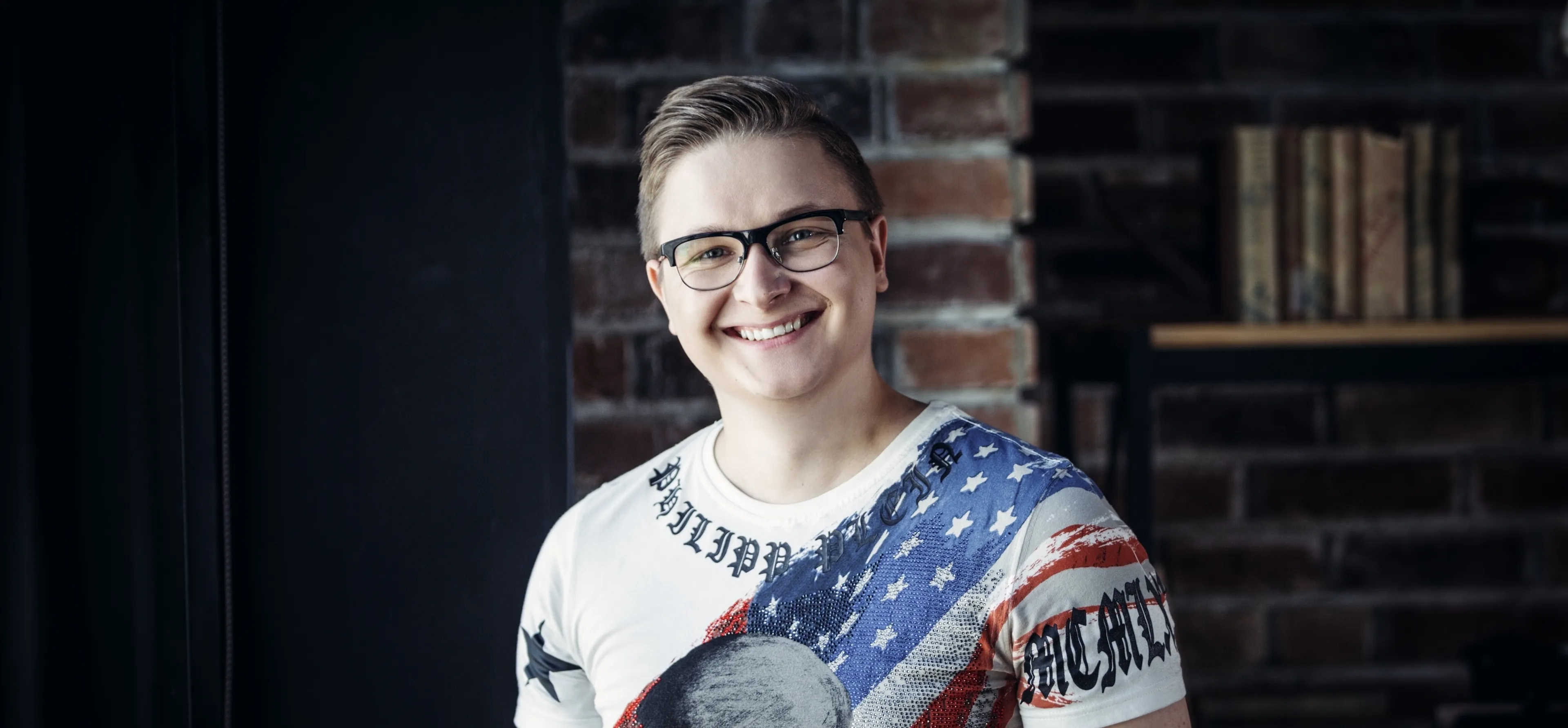
Andrey Ryzhov graduated from Oxford University in 2014. He wanted to be a developer, but didn’t make it past the interviews at Google, Blizzard, or Valve.
He moved back to Moscow and happened to meet the owner of a hookah lounge located in his building’s basement. They became business partners, and in the spring of 2018, they opened a second lounge called Chilling. The venue generates about 3.5 million rubles in monthly revenue.
Andrey is now developing an IT system to automate salary calculations, cash flow, analytics, and other processes involved in running bars or other service businesses.
The entrepreneur wants to create a “Dodo Pizza” of the hookah world, and in the interview, he talked about the problems he encountered when launching the establishment. He also disclosed the launch costs and the company’s business indicators.
From Oxford to a Moscow Basement
Your hookah lounge looks like it was designed by a fan of Hugh Hefner and steampunk.
I love steampunk games. Before I opened my hookah bar, I was developing prototypes for iPhone games. I wanted to turn it into a real career, but it didn’t really work out.
Why?
It’s a funny story — like many startup tales. After graduating from Oxford, I was thinking about what to do next: whether to stay in England or go back to Russia. I felt more comfortable in Russia, so when I arrived, I started applying to various IT companies and game studios.
I was quite disappointed when I didn’t get an interview at Google in Mountain View, but I was well prepared for the ones with Russian companies. I applied to ZeptoLab.
The interview process lasted a month, during which I worked on a test game. I was applying for a developer position rather than a junior one, so they preferred someone more experienced, even though I performed well overall.
Then I applied to Deutsche Bank and made it through all the interview rounds. At the fourth stage, where they really test your technical skills, I was rejected because my algorithms weren’t strong enough.
I grew a bit tired of programming. I was spending hours solving problems on TopCoder, and all I could think about was numbers and math. I was so over it.
When I moved to Moscow, there was a hookah lounge in the basement of my building. I had no idea how people even knew about it, and I was curious why anyone would go there.
I checked it out a few times, met the owner, and learned he was looking for a partner. I decided to go into business with him. The investment was almost nothing — just 400,000 rubles.
Where did you get that kind of money?
It’s the kind of money you can save on breakfast at Oxford. But seriously, my parents gave me a million rubles. A lot of people think I’m some “golden boy” from England, but I’m not. That was all they could give. Getting that money wasn’t easy — it came with plenty of arguments and negative emotions — but I’m still grateful for the opportunity.
Your parents gave you a million rubles, yet you say you’re not a “golden boy.” I think the guys from the regions would disagree.
A million rubles isn’t much when you’re doing a design renovation for a 70-square-meter commercial space in Moscow. We spent 300,000 rubles just on ventilation.
On top of that, we had to buy equipment and invest in advertising. We saved wherever we could and did almost everything ourselves — sewing the sofas, buying fabric, foam rubber, and other materials.
What ended up happening with the place?
We were asked to move out — it turned out we’d signed a fake lease for a music studio that didn’t even exist. There was some shady story behind it.
I’ve never been great with paperwork. Even now, my partner handles it for me. Back then, I thought everything was fine. But once we started making money and I decided to look into the documents, I realized the whole thing was just off. I knew we’d get kicked out sooner or later.
How long did the place operate, and what was your peak revenue?
It ran for sixteen months — from October 2015 to August 2017. At first, we made about 200,000 rubles a month, and at the peak of our success, around 1.3 million. During that time, we had just four zones and a bar.
We more than recouped our investment, and profits were high because we kept everything in-house. We worked as hookah masters ourselves; I handled advertising campaigns in AdWords, built websites on Tilda, and shopped only at deep discounts. Everything was optimized to the max.
Did you end up parting ways with that partner?
Yeah, that’s right. After we lost the first place, I suggested opening a new hookah lounge, but I couldn’t convince him.
How much money did you have when it closed?
I’d managed to save around three million rubles, plus I still had some assets left — tables, paintings, things like that. We’d initially invested a million rubles and later reinvested our profits.
That approach helped us build up a decent amount of capital. My plan was to invest fourteen million rubles into the next venue, which meant I needed a partner who could contribute seven million.
It turned out to be an old friend from my hometown, Omsk — Dmitry Parygin. He lived in Moscow with his family and worked as a director at Dodo Pizza. One evening, he came by our first lounge, and I told him that in the evenings I was coding scripts to automate financial planning and client management.
Dima was pretty surprised and asked what exactly there was to automate, so I showed him my spreadsheets. He said I was basically building the same kind of IT platform they had at Dodo Pizza.
Dima saw Dodo Pizza as the benchmark for the restaurant business — a cutting-edge company built on technology. He understood that if I kept automating processes in the hookah lounge, it could turn into a real source of income.
When I started looking for a partner, I remembered how much Dima had liked my idea — and it turned out he was planning to launch something of his own too. In the end, we agreed that he would join the project along with an investor, which allowed us to raise our start-up capital to sixteen million rubles.
What were the investor’s terms?
He owns 25% of the company, but we have to repay his investment as soon as possible. Basically, for every million rubles in profit, we’ll return 500,000 to him.
Once we’ve paid him back, his profit share will remain at 25%, Dima will hold another 25%, and I’ll have 50%. Dima didn’t have the money himself, but he found the investor. Until we pay off the investment, he doesn’t get any profit — though both of us receive directors’ salaries of 100,000 rubles each. Some employees actually make more than we do.
How much does it cost to open a hookah lounge in Moscow?
All right, you’ve got the finances and shares sorted. So how did you find the location for the new lounge?
We quickly realized how tough the Moscow real estate market is. The space we ended up renting was basically the best of what was available — there simply weren’t any better options.
We reviewed around a thousand listings, narrowed them down to a hundred, and visited fifty. That process alone took three weeks.
What factors did you consider during the search?
We didn’t want to cause any trouble, so we looked for places that weren’t too close to residential buildings, schools, or nurseries. That was the biggest challenge.
In the end, we found a good spot not far from Chistye Prudy metro station. Negotiations dragged on for three months and nearly fell apart several times.
One day, for example, the landlord came in and said:
– I’ve changed my mind. I don’t want 300,000 rubles a month — I want 450,000, and in dollars.
– But we’ve already ripped everything out and started the renovations.
– That’s your problem.
We wanted to sign a ten-year lease, but he wouldn’t agree. Later, he was okay with five years, then changed his mind again because he was worried about the exchange rate. He had bought the property in euros just before the Ukraine crisis, and when the ruble crashed, he lost a lot of money — so he wanted to recoup it as fast as possible.
He wasn’t against renting to us, but we had nowhere else to go. By that point, we’d already spent a million rubles: we’d torn out the old renovation, ordered a design project, and paid for the furniture.
The landlord was quite demanding. He asked for a business plan and wanted to know exactly how much we planned to invest. He dug into the figures and stats — which, honestly, made sense. You could see why he was cautious: two young guys with no track record and no experience.
In the end, we signed a four-year lease for 300,000 rubles a month. We won, though we easily could have lost. No one knew how it would end.
At one point, we even handed him the keys, saying, “We’re walking away,” but inside we were shaking — the money had already been invested.
Let’s talk about money. How much did you spend on renovations and getting everything up and running?
As I mentioned, the total came to sixteen million rubles.
– About 14.5 million went into renovations, equipment, and supplies such as charcoal and tobacco.
– Another 600,000 rubles went toward the rent deposit.
– Around 700,000 rubles covered marketing, printing, finalizing the website, and photo content.
The opening costs could have been even higher if we hadn’t done so much ourselves. We personally chose all the materials, furniture, and lighting for the interior and even designed the layout.
The construction company simply executed the plans we’d drawn up. We skipped 3-D visualization and did the demolition on our own — it took ten days but saved us roughly 200,000 rubles.
During construction we were on-site constantly, sometimes twelve hours a day. We handled all logistics ourselves, hauling and storing whatever we could at home — our apartment was packed with boxes of furniture.
We even grabbed hammers to clean the old brickwork and make it look nicer. For the last two weeks we were there with cloths and a vacuum, fighting the endless construction dust.
After the opening we spent another two million rubles over the first five months, mostly on the alcohol license, state fees, and stocking up on alcohol and bar equipment.
How much did the liquor license cost?
We obtained a one-year license for 350,000 rubles — the license itself cost 65,000, and the rest went to administrative expenses and professional services.
Documents required for obtaining an alcohol license:
– Copy of the company charter;
– Foundation (or incorporation) agreement;
– Resolution or minutes establishing the company and appointing the general director;
– Certificate of state registration;
– Tax registration certificate;
– Record of amendments to the founding documents (if any);
– Notice of registration of a separate subdivision;
– Bank confirmation of authorized-capital deposit;
– Receipt confirming payment of the state duty (65,000 rubles per year, or 325,000 for five years);
– Proof of ownership or a valid lease (or sublease) agreement;
– Technical passport (BTI) of the premises;
– Order appointing the general director;
– Power of attorney;
– Certificate of cash-register registration;
– Extract from the Unified State Register of Legal Entities (no older than one month);
– USRN extract with graphic attachment (if available);
– Company seal;
– Cash-register card;
– Notification of commencement of café operations filed with Rospotrebnadzor.
It took us two months to get the license. We spent a lot of time choosing a contractor and gathering documents. A single typo — even a missing comma — could have cost us the entire 65,000-ruble state fee. So we decided to play it safe and hire professionals.
Here’s what they handled:
– Prepared the complete application package;
– Drafted and filed the paperwork;
– Communicated with the landlord, who at first didn’t understand why we needed so many documents;
– Set up the EGAIS alcohol-tracking system and trained us to use it;
– Submitted the registration documents;
– Coordinated with the Department of Commerce;
– Assisted during the on-site inspection;
– Collected and delivered the license once approved.
They also explained critical details — for example, that before submitting you must check for any outstanding government debts, even minor penalties. Otherwise the license would be denied and the 65,000 rubles forfeited. We decided not to risk it or waste time on bureaucracy, since we were already knee-deep in development work.
How many customers do you get each month? How much do you make?
In July, when the foreign fans came for the World Cup, we made 3.45 million rubles. Our profit margin is around 35%, but that’s not our ceiling yet — we’re aiming for 40%.
We get about 2,500 visitors a month, and that figure only includes those with discount cards.
Marketing
Tell us about your customer relations module.
I developed an iPhone app that gathers client data from the booking system and discount card terminals. It syncs this data with the phone’s contact book.
So when a client calls the lounge, their number pops up along with their visit stats and average bill. Based on that information, the system assigns each visitor a score and ranks them according to RFM analysis — Recency, Frequency, and Monetary value.
Automated customer recognition
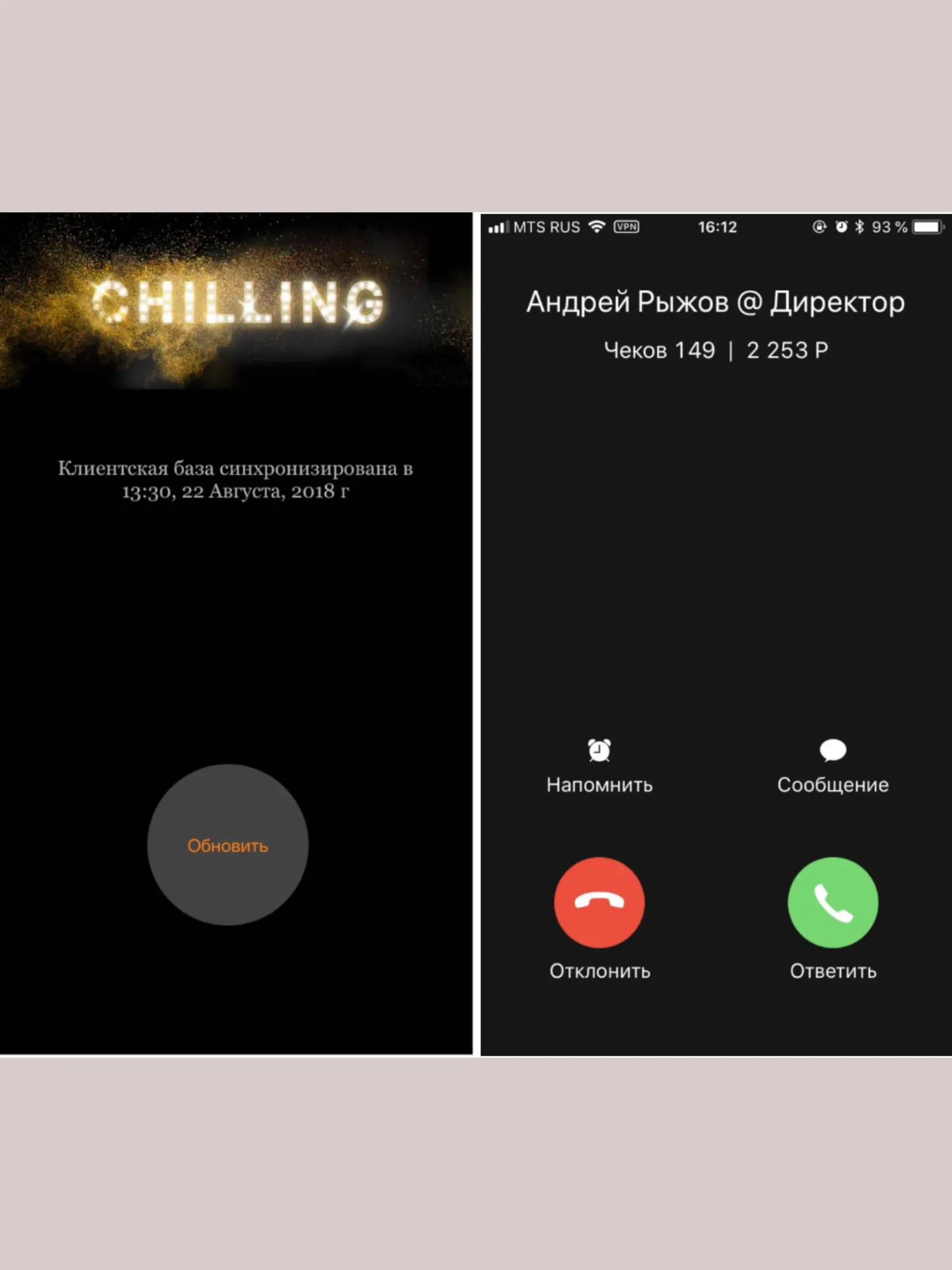
At the top of the rankings are the champions — customers who visit often and spend the most. Then come the loyal, potentially loyal, recent, dormant, sleeping, and lost ones.
How do you work with your champions?
We have a custom SMS service that sends out what we call “letters of happiness” — automated thank-you messages triggered from an Excel spreadsheet. They’re purely about appreciation, with no advertising. They’re not the typical “Come back, we miss you,” but rather, “Thank you for being with us — we love you.”
Do you track the conversion rate for those messages?
That’s tricky. I usually ask customers directly whether they’ve received the messages, and sometimes it’s obvious — people post screenshots of them on Instagram.
You mentioned dormant customers.
The system automatically alerts the manager when a customer needs attention.
And what should the manager do in that case?
We don’t call them — that would be annoying. Instead, we send a polite reminder but never offer additional discounts. We have that policy because all of our regulars already have discount cards.
Usually, if someone is marked as “needs attention,” it means they already have a solid discount — they’re loyal customers who’ve just stopped coming for a while.
What’s your monthly marketing budget?
Usually around 350,000 rubles, though we’ve gone as high as 400,000.
What tools do you use to attract customers?
Google Ads, Yandex.Direct, and VKontakte. We’re actually one of the few hookah lounges that received official approval from the VKontakte admin team.
We don’t aggressively promote hookahs — in fact, we hardly feature them at all. Our feed only has two photos with hookahs. The focus is on the atmosphere: a place where you can truly relax and enjoy yourself.
In the end, when it comes to advertising, you’re not selling hookahs — you’re selling the vibe.
We also have priority listings on Yandex and 2GIS, and we collaborate with bloggers.
Which channel works best?
Google Ads.
I thought you’d say Instagram.
We tried — three times, actually — but it didn’t perform well. If all our advertising channels bring in around 600,000 rubles, Instagram accounts for only about 30,000 of that.
Instagram targeting is pretty weak. VKontakte used to deliver great results, but now it’s lost some of its effectiveness. The most reliable sources are Google Ads and word of mouth — both bring in about the same number of visitors.
What’s your record for visits?
One client came forty-five times in a single month! At our previous lounge, there was a regular who realized it was cheaper to work from our place than from his office — plus he could have a hookah, which he loved.
What’s the biggest tab in your lounge’s history?
Recently, a group of foreign guests spent 50,000 rubles during a football match. Among locals, the record is 26,000.
Who’s your target audience?
Mostly visitors aged 25 to 34 — entrepreneurs, programmers, and artists. In other words, people connected to art, finance, and business.
And in reality?
Pretty much the same. I keep mental portraits of our regulars — I know who’s the most loyal, who spends the most, and who gives the best feedback.
Sometimes we get younger visitors, aged 18 to 24, but we try to filter that audience — for instance, we’ve disabled targeting for that age group on Google.
Why’s that?
Younger crowds can get a bit too lively and make more noise than others. We allow guests to bring their own drinks, and this age group tends to show up with a lot of alcohol — and take it a little too far.
Who do you see as your main competitors?
There are strong chains out there, like Myata Lounge and HookahPlace, but I wouldn’t say we’re in direct competition. We’re aiming for a more elevated level — higher average checks, more refined interiors, and first-class service.
Our automation gives us several competitive advantages. It impacts key metrics such as return rate, conversion rate, and payroll percentage. By standardizing processes through our IT system, we ensure consistent service quality, which in turn improves customer retention and conversion.
Honestly, I don’t really see us as competitors in the usual sense. Yes, they sell hookahs — but we offer something more. I wouldn’t even call us a hookah bar; we’re closer to a lounge club. It’s more of a lounge experience.
We’ve got plenty of separate lounge zones so guests can spread out and still feel at home. Designing that cozy zoning system was one of our biggest challenges.
What are the three main trends in Moscow’s hookah market right now?
It’s hard to pinpoint, but the main trend is a shift from quantity to quality. This principle is finally taking hold, and there are lots of beautifully designed new venues opening across the city — I’m genuinely impressed by how many visually stunning places have appeared.
In more competitive markets, entrepreneurs are becoming savvier and turning to IT solutions. Hookah lounges are evolving into proper businesses rather than small hobby projects run from home.
Another trend is the rise of Russian-made products — hookahs, bowls, and tobacco. Surprisingly, Russia is now a global leader in hookah craftsmanship. Maybe not in production volume, but definitely in quality. We use mostly Russian products ourselves.
IT System and Gamification
You mentioned you’re building your own IT platform?
Yes, though for now we’re still documenting the overall concept — essentially creating the technical brief for our future IT department.
It includes automated spreadsheets in Google Docs that help with analytics and advertising. You could call it a prototype of the full system we’ve been developing since 2015. We also have two proprietary iOS apps.
Tell us more about the modules.
Let’s take payroll as an example. Our system saves us a lot of time and effort, and we’ve structured it in a rather unusual way.
Most places use simple payment formulas — a fixed hourly rate plus a sales percentage. For example, 100 rubles per hour plus 10% of sales. We decided to go further.
Here’s what our payroll module looks like. At the top of the table, there’s a summary of current payroll costs and a forecast for what those costs would be if employees meet or exceed their plans.
The “Average Check” field shows the average revenue each employee generates per shift. The performance blocks indicate how often employees hit or exceed their targets.
The three blocks below detail the salaries of masters, administrators, and directors. Let’s take the masters as an example. Like in most establishments, their salary consists of two parts — a fixed rate and a percentage of monthly revenue.
The fixed rate — 100 rubles per hour — remains constant (see the “Shifts” column). The percentage (shown in the “Bonuses” column) is calculated dynamically.
At the beginning of each month, every employee starts with a base rate of 3% (“Base %”). Depending on how long they’ve worked with us, they may receive an additional 1.5%. Another 3.5% depends on their exam results, which are reviewed periodically.
Every time an employee works their assigned shift without swapping with someone else, they earn an extra 0.1%. On top of that, they can get an additional 0.13% or 0.16% for meeting or exceeding their daily targets. All of this is reflected in the “+%” column.
There are also reduction factors (“%-” column), regulated by seventy specific points. Employees may receive deductions for things like entering reservation data incorrectly, closing receipts with errors, forgetting to restock toilet paper, or receiving a guest complaint. On average, monthly deductions don’t exceed 2,500 rubles.
If an employee meets all their monthly targets, they can earn up to 18% of the revenue generated during their shifts. Their total monthly income (“Total” column) starts at about 100,000 rubles — whereas in other lounges it’s usually 50,000–60,000. During the World Cup month, some employees made up to 150,000 rubles.
All data in the table updates in real time without any manual input from me (the table shown here reflects data as of September 13 — vc.ru). Hours worked are logged via a reception terminal app, where employees clock in and out. Target completion percentages are pulled from the cash-flow sheet, and the number of shifts comes from Google Calendar.
Each employee can access their analytics and see how much they’re projected to earn by month’s end — giving them a clear opportunity to influence their own income.
What impact has the system had?
First, employees have started meeting the targets that I originally set just for myself — mostly to track revenue and plan expenses. Now, they see those numbers as their own goals.
Second, their activity throughout the month has become much more consistent.
Previously, our monthly target was 1.5 million rubles. If employees hit it, each of them received a 2% bonus on top of their basic 10% revenue share.
The problem was that they’d often realize only in the final weeks that the goal was within reach. They’d cruise through the first three weeks and then push hard in the last one.
For example, the managing director would call me and say, “Listen, man, it looks like we’re not going to make it.” And I eventually realized the issue wasn’t really his — it was mine. I hadn’t built the right motivation system.
What’s your staff turnover rate?
At the new lounge, it’s currently zero — though we’ve only been open for five months. We’ve streamlined our operations and eliminated separate positions like hostess and bartender.
Now we have one cleaner who handles routine maintenance, but everyone else shares responsibility for keeping the bar in order. Each team member is a hookah master, bartender, hostess, and waiter all at once.
I’ve mentioned our certification process before, but let me elaborate. Our regulations are laid out in a 250-page document in Google Presentations. The team knows it inside and out, and we test their knowledge every month. The attestation itself includes around 300 questions in Google Forms.
Our main focus is improving the efficiency of our staff. I’m constantly looking for ways to make their work more structured, standardized, and automated — so that processes run smoothly and their compensation remains fair.
How do employees know where to work and when to switch roles?
Right now, the manager oversees the rotation manually. For example, if he sees that someone’s tired of standing behind the bar, he’ll move them to greeting guests instead. But in the future, we plan to introduce Apple Watches that will automate the rotation process.
At Dodo Pizza, there’s a position called shift manager — someone who’s not quite a regular employee, but not yet a full manager either. Their job is to assign tasks and distribute responsibilities among team members.
We’re planning to eliminate that position to reduce payroll costs while keeping overall salaries high. The responsibilities of the shift manager will be taken over by smartwatches worn by each employee. The system will monitor activity levels in each zone — reception, cocktail bar, or hookah area — and automatically reassign staff where they’re needed most.
Plans
What will the IT system look like once it’s complete?
It’s going to be a SaaS platform — a suite of apps for Mac, iPhone, iPad, and Apple Watch. For now, we’re staying within the Apple ecosystem.
iPads will be installed at the bar to track orders and display technical preparation charts. Even the cleaner has an iPad that tells her what needs to be done and when. It’s a fully integrated “smart” ecosystem — a bit like having our own version of Alisa.
The core of the system is a cloud-based business intelligence platform that gives the manager full insight into the company’s operations. That’s something many businesses lack — proper business analytics — and it’s absolutely crucial.
There will also be a set of employee modules covering regulations, training exams, and complete transparency in salary calculations, including real-time updates. A shift-planning schedule with built-in chat will replace the need for creating separate conversations on VKontakte or Facebook.
Another module will automate SMS and email marketing for “smart events.” There’s also a financial planning module that lets the manager monitor cash flow — both current and projected.
Since we handle both cash and non-cash payments, it’s essential to maintain balance between them to avoid liquidity issues and ensure salaries are paid on time.
The platform will also include modules for taxes, warehouse management, inventory, menu creation, and recipe charts. All personnel management tools will be available directly from the iPad — essentially turning it into a “smart control panel” for the entire lounge.
You’re into games, so your system must have some game-like features, right?
Absolutely. That’s part of what I call our “second-phase” goals — something for the future, once we’ve digitized enough of our processes.
We already have a few gamified elements, like employee rankings that motivate the team to perform better over time. You can show someone their stats and say, “You’ve been at the bottom for three months — time to level up.”
In the future, we plan to introduce dailies — daily quests, just like in World of Warcraft. To make that work, we’ll need to build a full quest-configuration system, and that’ll take some serious development time.
What will those quests look like?
We’ll link system metrics directly to the quests. For example, at the start of a shift, an employee might get a task to sell at least ten servings of Coke. Managers will have their own objectives — like increasing profitability from 35% to 38%.
Essentially, anything the system can measure can be turned into part of the salary structure. It’s like playing a game — you complete quests and earn real money for it.
Isn’t there a risk people might get so caught up in the process that they burn out?
We have clear limits on how much anyone can work in a day, and we regularly talk with the team about it. Overtime is always optional and pays extra, but people still need to live their lives. For us, the main thing is that our employees earn well and have time to rest.
What are your plans for the next year besides developing the IT platform?
We’re planning to open two more venues. We’ve already secured the funding for the second one and expect to launch it in October. The third should open around late December or early January — we just need a partner and additional investment.
We also have a long-term business plan covering the next seven years. Like for anyone without much experience, some of it is still uncertain, but we have to believe in our own numbers.
Our goal is to open about five locations in Moscow and four in St. Petersburg — and then expand internationally.
Do you have an estimate of how much the IT system will cost?
It’s hard to say exactly. We’ve recently hired a tech director — he also works in the data analysis department of a major graphics-card manufacturer — and together we’re drafting the documentation and budget estimates.
The IT department will have seven people: two frontend developers, two backend developers, one UX/UI designer, and one mobile developer.
We plan to use the system not only in our own venues but also to support the franchise model as we expand. That will require a 24/7 support team. We also intend to bring on a senior marketer and a financial specialist.
Altogether, we expect to spend around 30 million rubles over the next year — roughly 2.5 million a month — though the final figure will depend on how quickly development progresses.
Where do you plan to get the funding?
We’re negotiating with several private investors. A few people we know are genuinely enthusiastic about our IT-driven approach and the results we’ve achieved so far. Still, funding is always a delicate subject. We’re continuing discussions with potential investors; my partner is in charge of that side of things and developing our strategy.
Have you considered how franchise expansion might affect quality?
Quality control will be a shared responsibility between the operations team and the IT department. The IT system itself is designed to monitor key metrics — conversions, return rates, and overall process efficiency.
With built-in business-intelligence tools, we’ll be able to see exactly what’s happening at every location and verify that results stay within expected ranges. If something looks off, we can check live camera feeds or send in a mystery shopper.
I’m a perfectionist. My goal is to make sure no branch underperforms — and ideally, that they all reach the same level of profitability. A franchisee shouldn’t just buy a business; they should be buying a source of income.
That’s the essence of franchising: an entrepreneur invests their money, expecting that we’ll provide support and help minimize risk. If we fail to do that, then we’ve failed altogether.
Don’t you think the market is getting oversaturated? There’s a hookah lounge on every corner.
That’s great — let the market grow. We’re not planning to open dozens of lounges; we’ll open just a few, but each of high quality — with strong customer loyalty, higher average checks, and solid profitability. We’re only happy when the market expands.
Still, even if more lounges open, the number of people who smoke hookah isn’t really increasing, is it?
It is, and I can see that from Chilling. Many people who had never tried hookah before are now coming in. We’ve even had guests leave reviews saying they used to visit basement hookah spots a couple of years ago and had no idea better places existed in the city. So yes, people are returning, and the market is definitely growing.
Do you ever feel an ethical conflict? After all, this could be seen as promoting smoking.
I do, and that’s where you have to ask yourself the right question — what exactly bothers me? It’s not an easy one to answer.
Most of our hookah masters only smoke during their shifts — and they’re all into sports. I’m also very active myself and try to promote a healthy lifestyle. Maybe it’s just an internal sense of responsibility.
We didn’t create this place to get people addicted to smoking. The whole idea is to build an atmosphere that feels like a second home — comfortable, friendly, and inspiring.
Competitor Opinion
Any modern business needs modern solutions — and the hookah industry is no exception. There have been several attempts to develop convenient software for managing hookah lounges. The market already offers plenty of free and affordable options, but none of them are perfect, and no single product meets every need. So far, there’s no clear leader that fully satisfies all demands.
At the same time, a hookah lounge isn’t fundamentally different from a bar or restaurant. There are already plenty of proven management platforms for the hospitality industry, and they’ve been around for years. One good example is Poster.
I’m not entirely sure hookah lounges need a completely separate system — but in our case, we decided to build one tailored to our specific requirements. We own a franchised hookah chain with 160 locations, so it made sense to develop our own product. Right now, HookahPlace is testing and gradually transitioning from third-party platforms to its in-house system.
— Anton Gaivoronsky, co-founder of HookahPlace, a chain of hookah lounges
Related articles

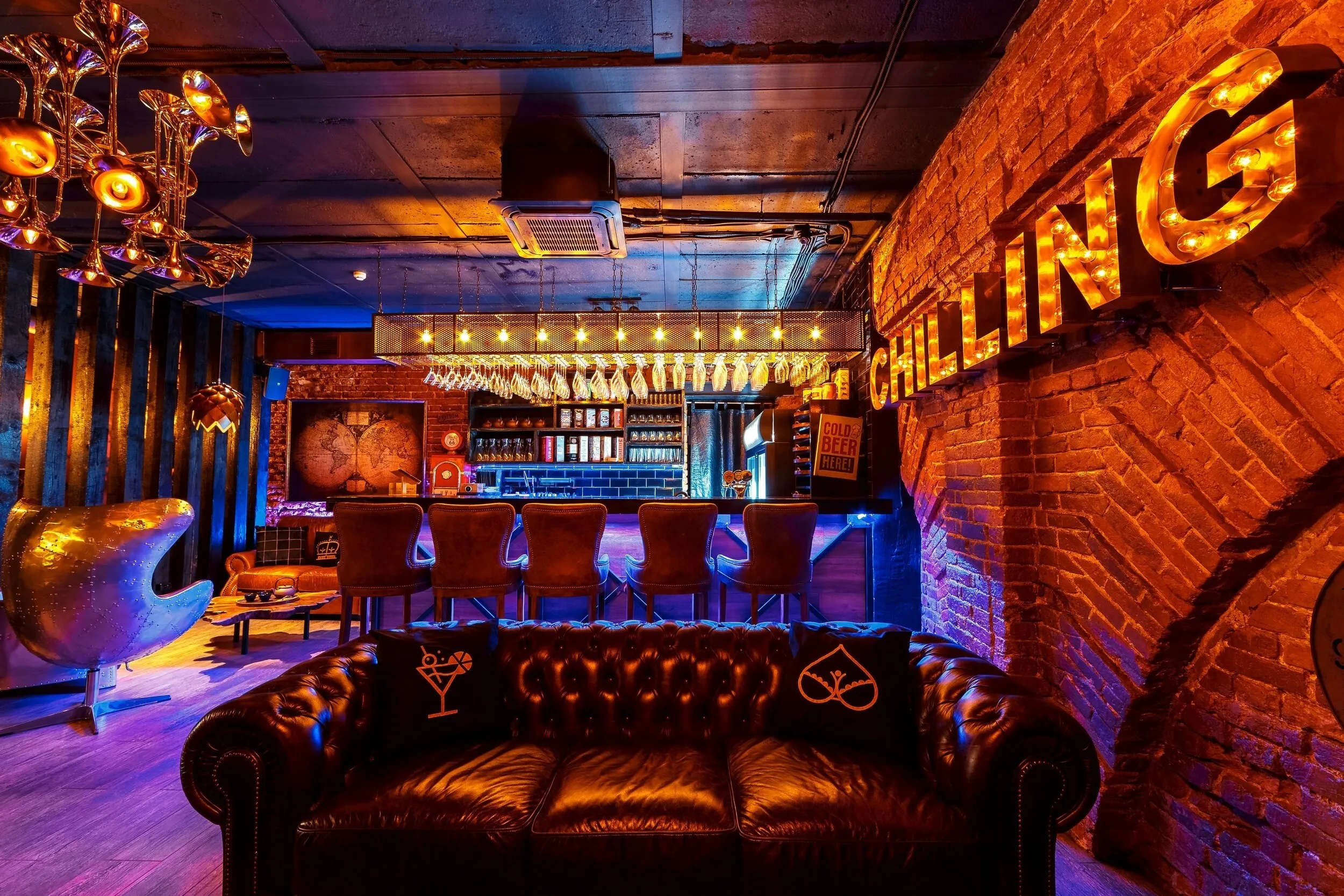
.jpeg&w=3840&q=80)
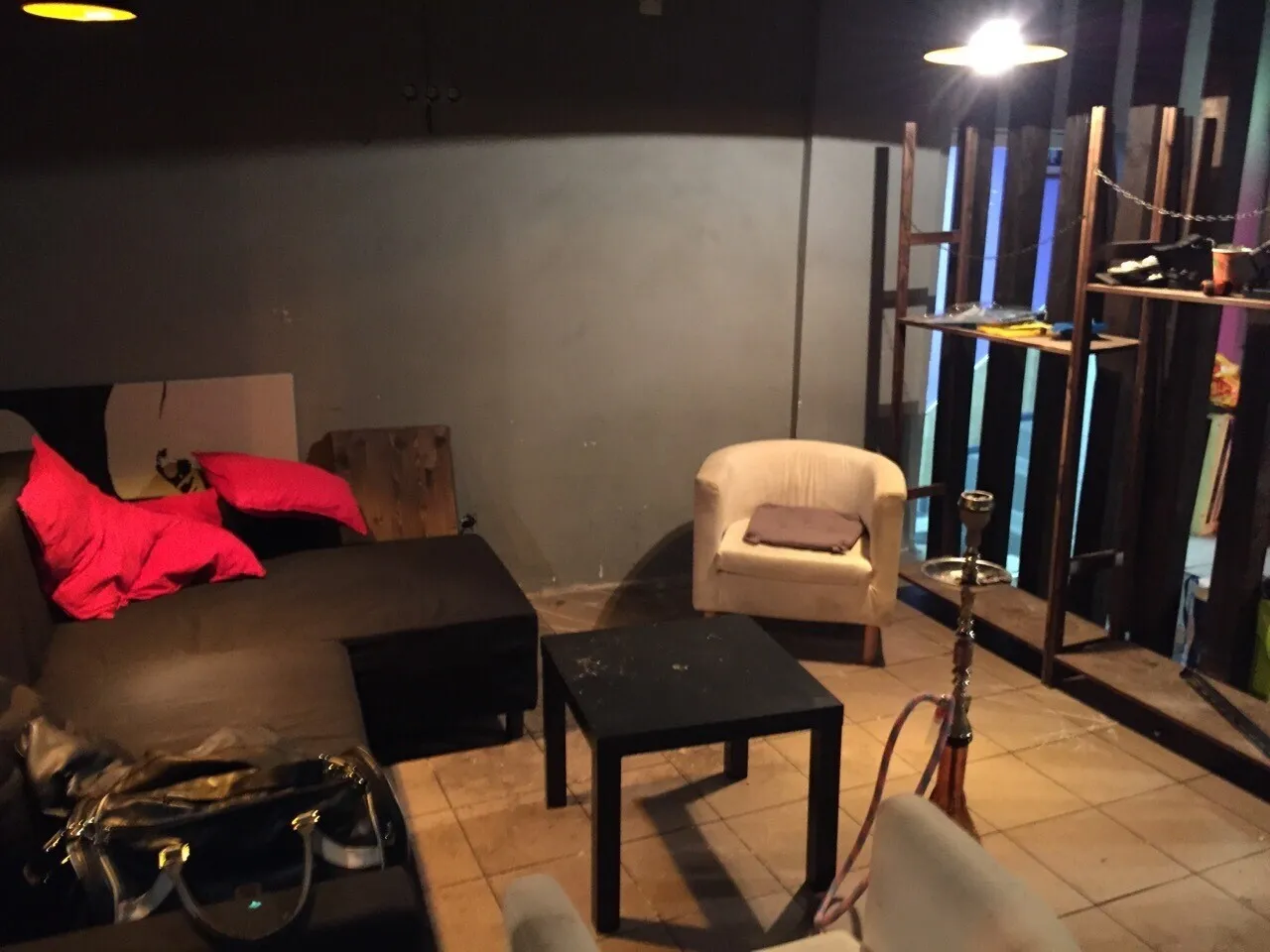
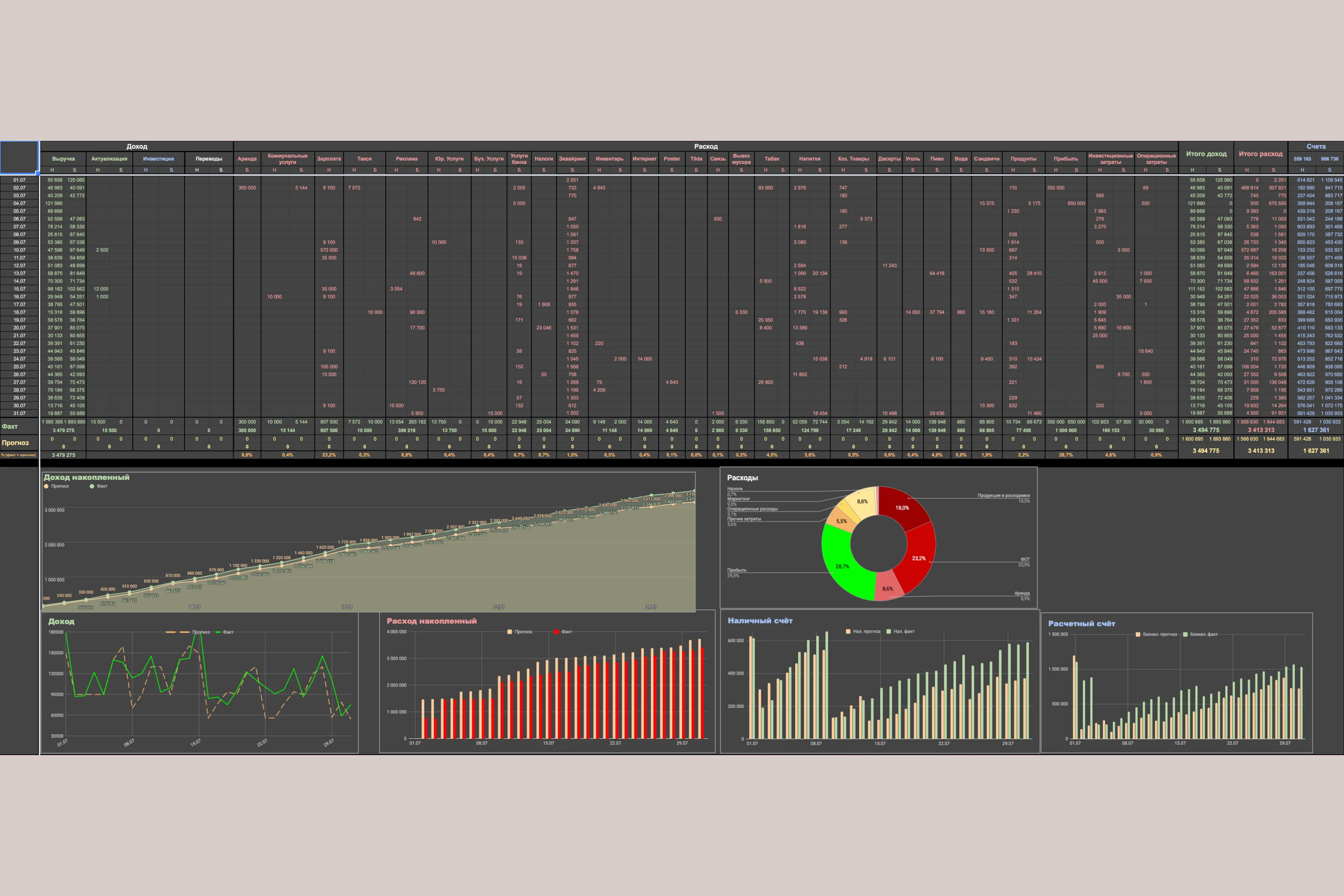
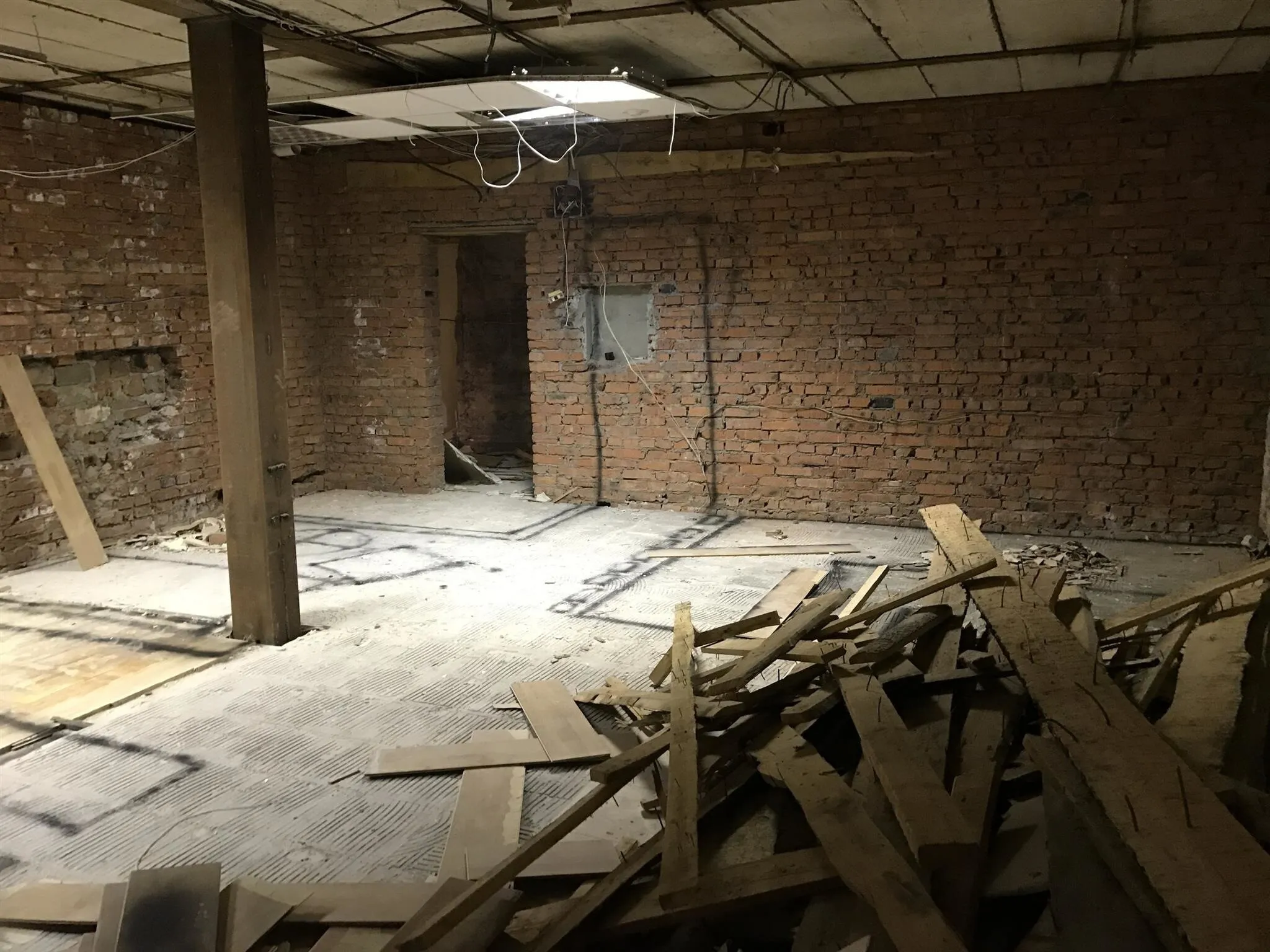
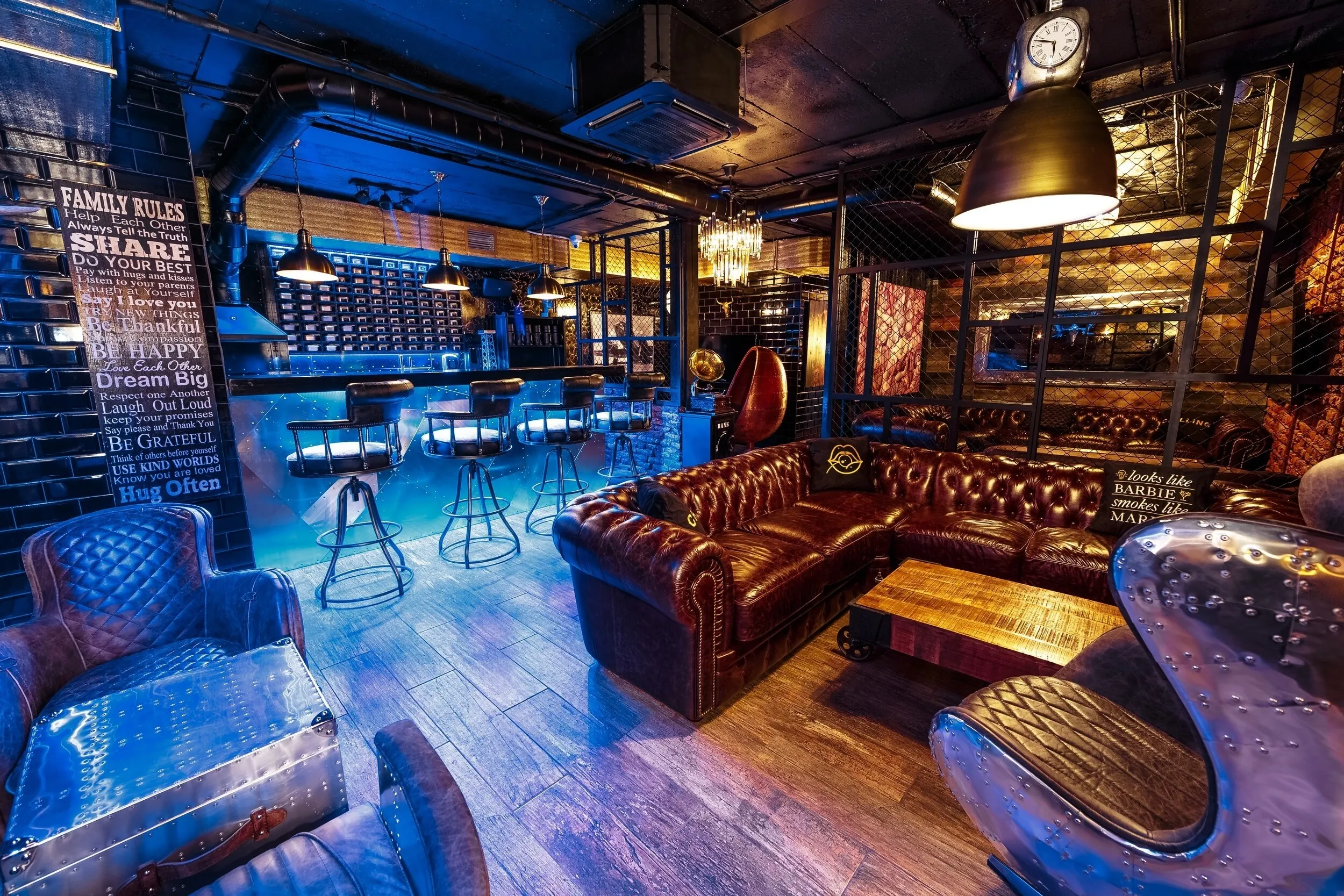
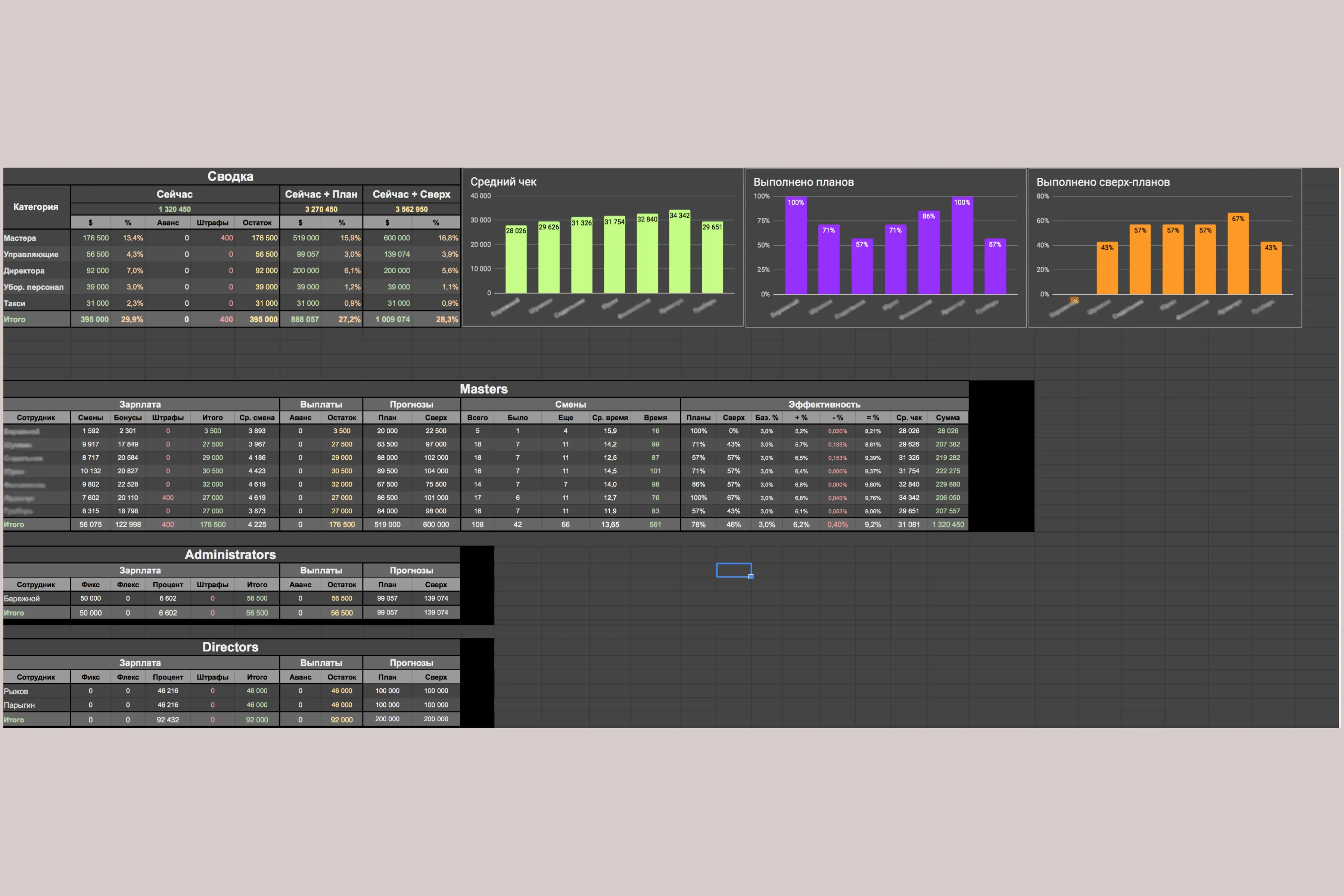
.png&w=3840&q=80)
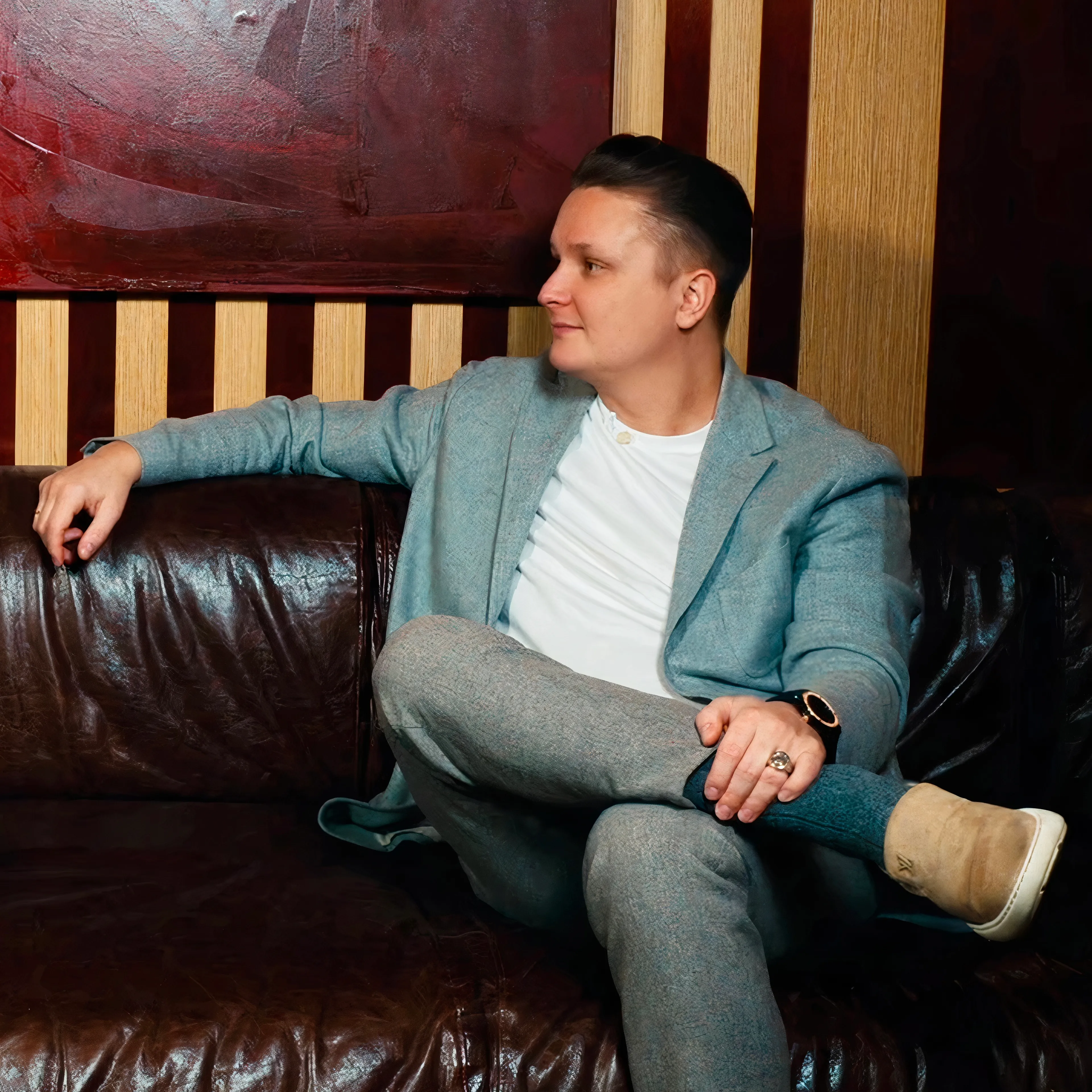
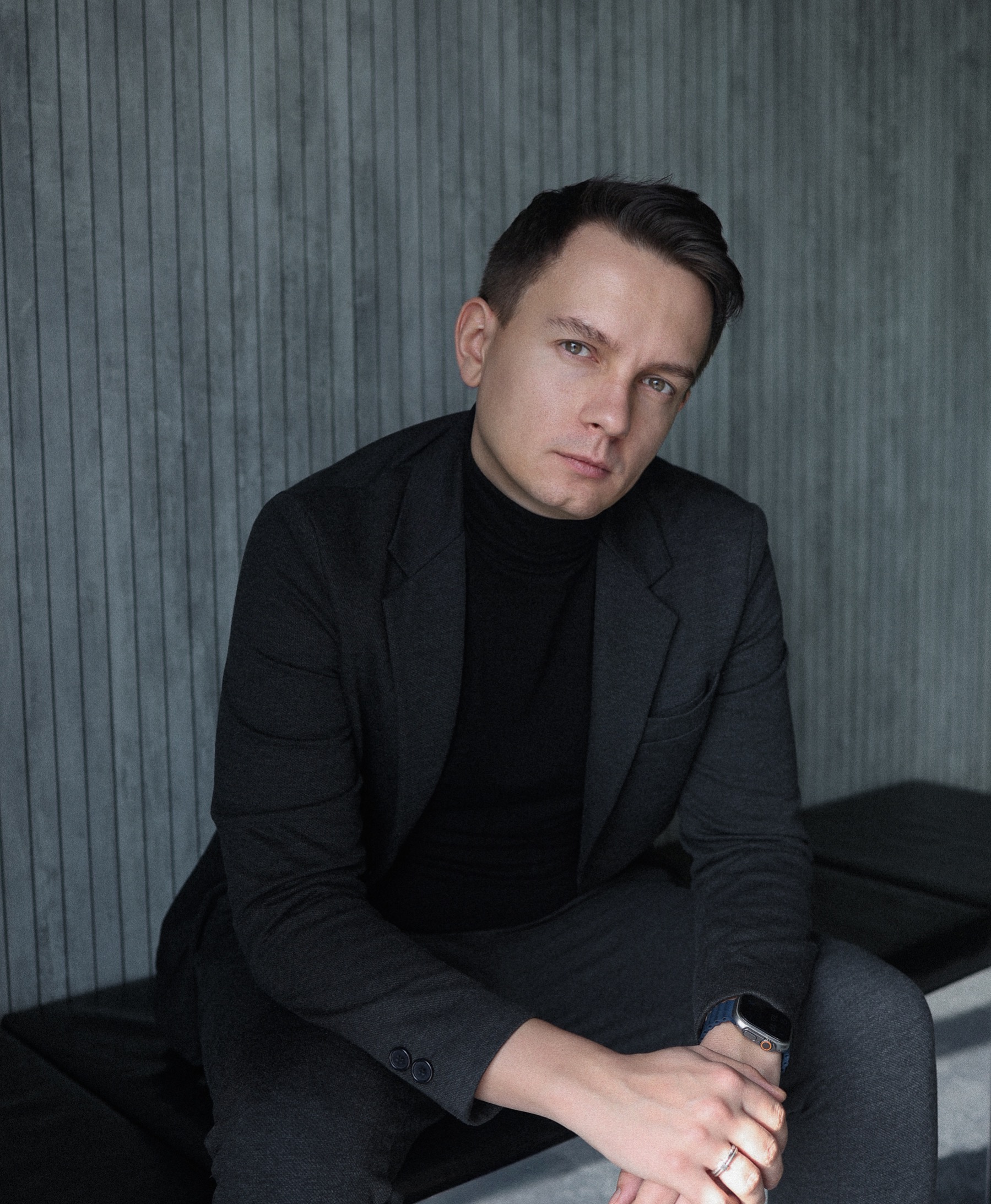





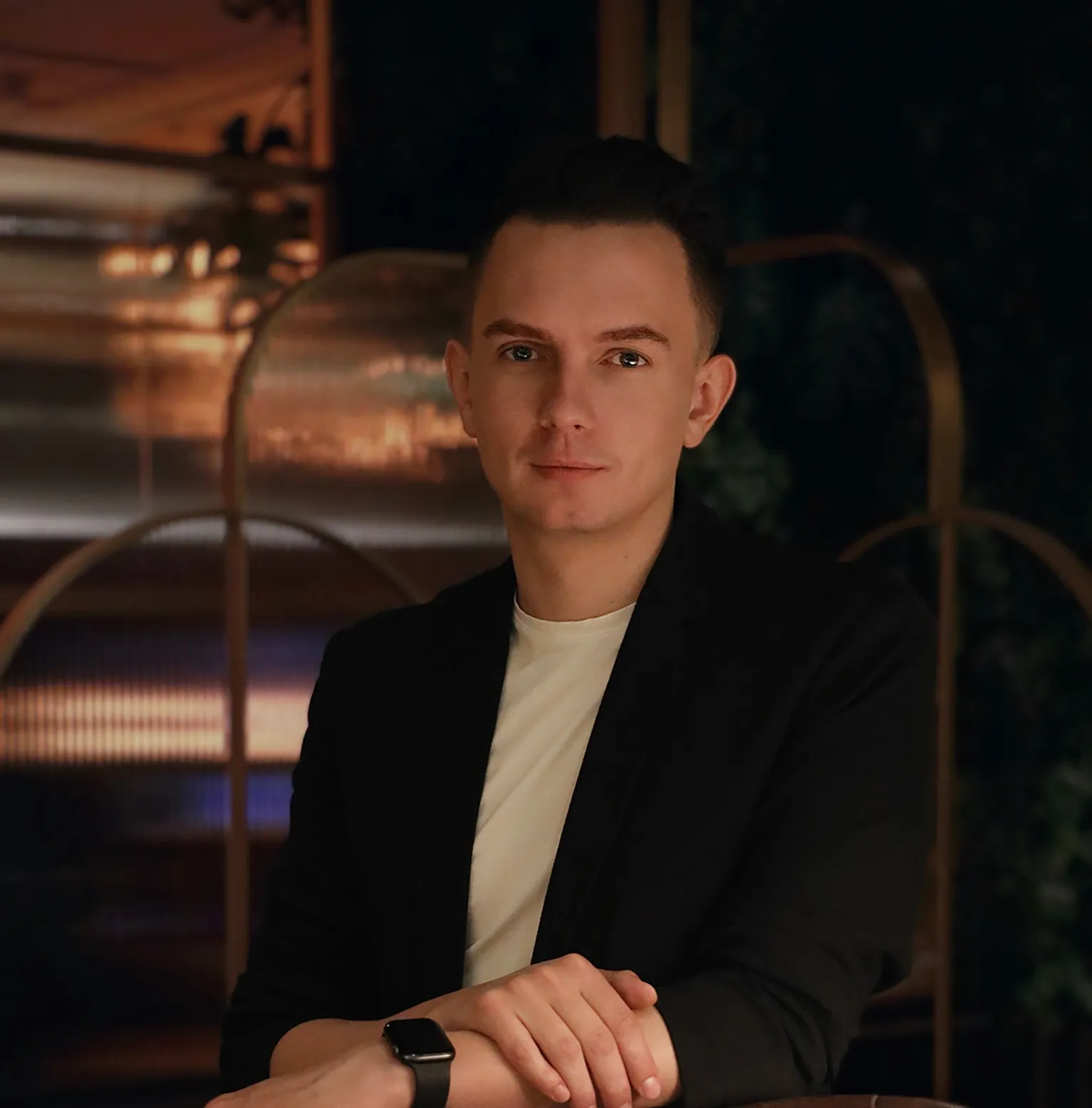





.jpg&w=3840&q=80)

.jpg&w=3840&q=80)
